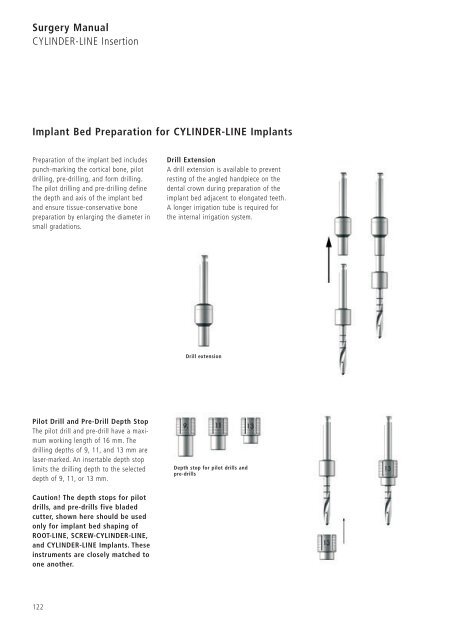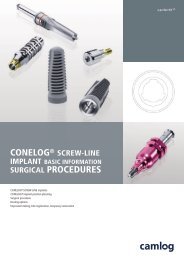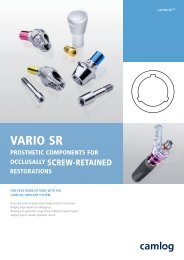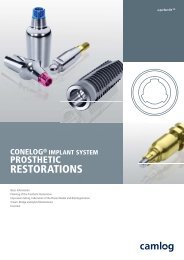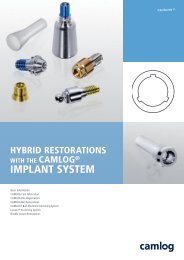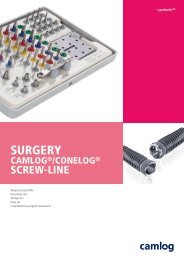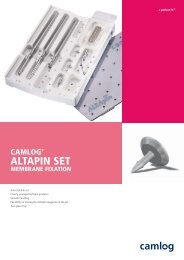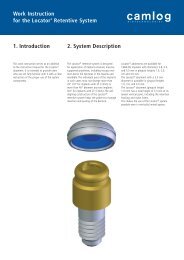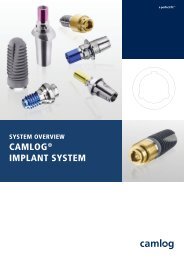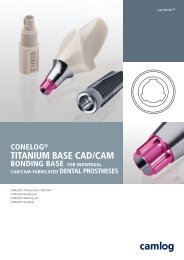1 Surgery CAMLOG Compendium
1 Surgery CAMLOG Compendium
1 Surgery CAMLOG Compendium
You also want an ePaper? Increase the reach of your titles
YUMPU automatically turns print PDFs into web optimized ePapers that Google loves.
<strong>Surgery</strong> Manual<br />
CYLINDER-LINE Insertion<br />
Implant Bed Preparation for CYLINDER-LINE Implants<br />
Preparation of the implant bed includes<br />
punch-marking the cortical bone, pilot<br />
drilling, pre-drilling, and form drilling.<br />
The pilot drilling and pre-drilling define<br />
the depth and axis of the implant bed<br />
and ensure tissue-conservative bone<br />
preparation by enlarging the diameter in<br />
small gradations.<br />
Pilot Drill and Pre-Drill Depth Stop<br />
The pilot drill and pre-drill have a maximum<br />
working length of 16 mm. The<br />
drilling depths of 9, 11, and 13 mm are<br />
laser-marked. An insertable depth stop<br />
limits the drilling depth to the selected<br />
depth of 9, 11, or 13 mm.<br />
Caution! The depth stops for pilot<br />
drills, and pre-drills five bladed<br />
cutter, shown here should be used<br />
only for implant bed shaping of<br />
ROOT-LINE, SCREW-CYLINDER-LINE,<br />
and CYLINDER-LINE Implants. These<br />
instruments are closely matched to<br />
one another.<br />
122<br />
Drill Extension<br />
A drill extension is available to prevent<br />
resting of the angled handpiece on the<br />
dental crown during preparation of the<br />
implant bed adjacent to elongated teeth.<br />
A longer irrigation tube is required for<br />
the internal irrigation system.<br />
Drill extension<br />
Depth stop for pilot drills and<br />
pre-drills


